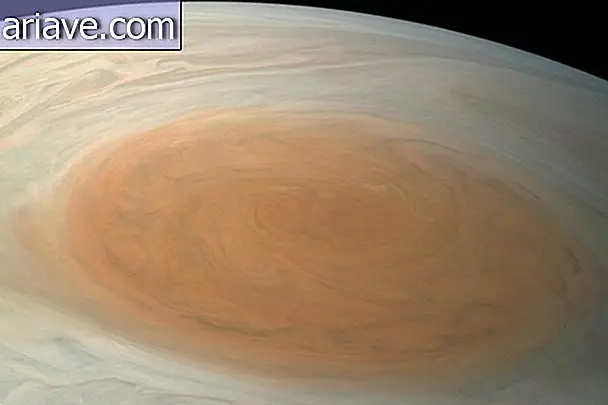After all, how did Pluto's famous “heart” form?
I will say you were not surprised - and even amazed - when the image above, recorded by the New Horizons spacecraft, was released last year! The figure of Pluto and his huge "heart" have conquered the Terrans, but not everyone knows what this curious feature of the dwarf planet is.
According to the BBC's Jonathan Amos, this spectacular Plutonian feature corresponds to a huge icy plain called Sputnik Planum. It is the most striking geological feature of Pluto and covers an area of 900, 000 square kilometers. In addition, its surface appears to be made up of a series of polygons, and if you pay attention you will notice that it does not have impact craters like the rest of the star.
Constant movement
According to Jonathan, the lack of "marks" in Sputnik Planum is associated precisely with the fact that it is made up of polygons - or cells - composed of ice-shaped nitrogen. Astronomers have observed that, from a geological point of view, this layer of solid nitrogen remains in constant and vigorous motion, and this "turning, moving and stirring" erases the marks that appear on the surface of the plain.

According to the scientists, this whole movement is caused by the heat present in Pluto's nucleus - which results in thermal convection that causes the ice that is in the upper layers of the earth to "roll" up and down, and the plain present this peculiar form. See the following scheme:

And where does this heat - or energy - that exists in the core of the dwarf planet come from? According to astronomers, radioactive elements originated from the time when Pluto was formed. What's more, what's more interesting is that, as they explained, this movement also gives the impression that Pluto's "heart" is really beating.
Beating heart
According to Jonathan, the visible polygons on Pluto's surface are 10 to 40 kilometers wide and cover a deep basin that is surrounded by mountains. In addition, each cell has a kind of dome about 50 meters above the ends, and they are flanked by depressions that can reach 100 meters deep. See the following image:

Analyzes of data collected by New Horizons revealed that lowland ice is composed mainly of nitrogen as well as carbon monoxide and methane, but in smaller quantities. In addition, despite Pluto's freezing temperatures - around 235 ° C - this material is still able to flow across the surface.
And when it comes to “erasing” the surface marks of Sputnik Planum, simulations have pointed out that the upper layers of the dome covering the cells only need to move a few inches horizontally annually to renew their coverage. According to the scientists who conducted the studies, although it seems little, this movement is much faster than the rate of impact that Pluto receives from space rocks.
Peculiar movement
Astronomers also came to other very interesting conclusions about the dynamics of Sputnik Planum. The analyzes showed that the basin in which the polygons are found is between 10 and 20 kilometers deep - which is more than expected for all observed movement to occur.

Thus, to explain thermal convection and the surface renewal cycle, astronomers propose that what happens is that the dome of cells moves much slower than the lower layer and therefore receives more heat from it. Pluto core. In this case, the process would occur between 3 and 6 kilometers deep and depend on how nitrogen reacts with respect to temperature, pressure and other factors.
How does this system form?
According to Jonathan, Sputnik Planum is where Pluto's recent geological activity is most evident, and astronomers have also noted the presence of "floating mountains." They believe they are fragments of frozen water similar to the icebergs that exist here on Earth.

As they explained, these "mountains" are carried across the plain by nitrogen glaciers and tend to accumulate in the field of polygons. However, these ice fragments cannot sink with the flow of the stir and stir from the thermal convection and end up forming a kind of hill chain at the ends of the cells.
Then the ice that accumulates in these places probably ends up vaporizing over time, producing the depressions that delimit the polygons. So, as you have seen, all of these elements are part of a dynamic cycle between terrain, atmosphere, mountains and glaciers.











